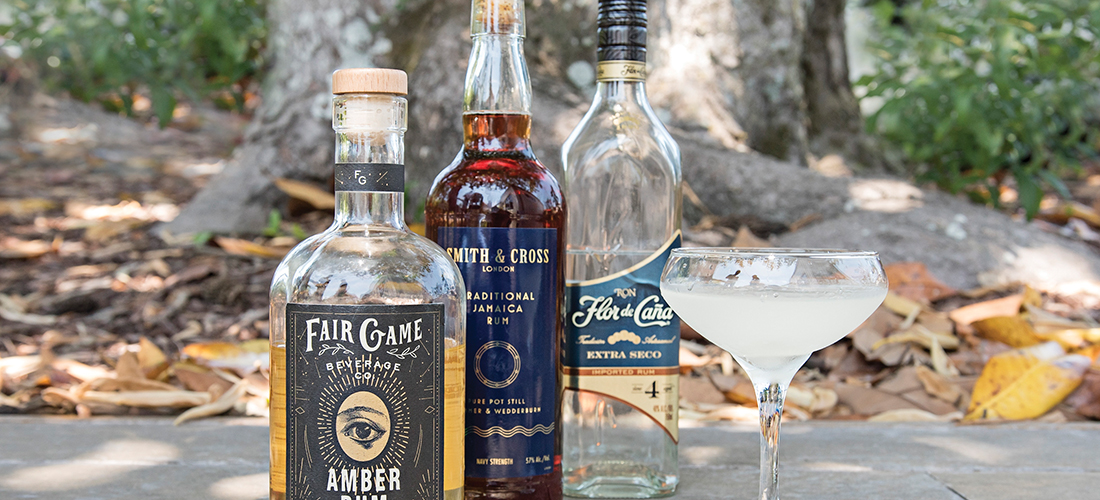Trespassing on Fertile Ground
Writing a book requires a curious spirit, a rental car and potential bail money
By Wiley Cash
On two separate occasions, my career as a novelist has nearly resulted in my being charged with breaking and entering. The first instance occurred at my elementary school. When I was 35 years old.
In June 2013, I was invited back to my high school in Gastonia, North Carolina, to receive an alumni award that was to be given during the school’s graduation ceremony. After flying down on Friday and settling in at the hotel, I woke up early on Saturday morning with a little time to kill, and I thought I’d drive my rental car over to Robinson Elementary, where I had gone to school as a child. The baseball field behind the school serves as the model for the ball field in the opening scene of This Dark Road to Mercy, a novel whose final edits I was then in the middle of completing. I wanted to see the ball field again and make certain that I had gotten it “right” on the page. I wanted to know that my memory had done it justice.
I followed the sidewalk to the back of the building, where a playground sat, the old baseball field resting at the bottom of the hill. I stood there, picturing my characters, two young sisters, playing on the ball field. Once I was certain that I had imprinted the scene upon my mind, I made my way back to the front of the school. That is when I passed the gymnasium. At that moment, the exact smell of the gymnasium came back to me, a scent I had not smelled in almost 25 years: fresh carpet, new paint, well-used basketballs, and something else that I wasn’t able to place. I couldn’t resist my curiosity in wondering whether or not the gym still smelled the same. I checked the door. It was unlocked. I opened it and stepped inside.
I have two bits of news to report: First, the gymnasium at Robinson Elementary has smelled the exact same for almost 25 years. Second, Robinson Elementary’s security alarm is really loud.
I slammed the door and stood there for a moment, and I’m not going to lie: I considered fleeing. Before I continue, let me tell you a little about my rental car. It was a souped-up, turquoise Camaro. The guy at the rental place had been excited when he told me about the car, and I didn’t have the heart to tell him that it wasn’t quite my style. Now, I pictured myself in my suit and tie, burning rubber in a turquoise Camaro as I peeled out of my old elementary school’s parking lot. I did the only thing I could think to do: I pulled out my cellphone and called 911 on myself. The conversation went something like this: No, I don’t work for Robinson Elementary. No, I don’t have a child who goes here. No, I’m from out of town. But I’m a writer, and I wrote about Robinson in a novel that will be out next year. I have to let you go. The police are here.
A similar line of questioning occurred during my parking lot police interrogation. As soon as I was released my wife called. “Is that a siren?” she asked. I gave the only answer I could give. “I set off the alarm at my elementary school.” Apparently, my wife is used to this type of behavior because all she said was, “I’ll talk to you later.”
The second time my career as a novelist nearly resulted in a rap sheet for breaking and entering occurred last spring, just west of Gastonia in the small town of Bessemer City, where much of my forthcoming novel The Last Ballad is set. The novel, which is based on true events, tells the story of a young woman who is swept up in a violent mill strike during the summer of 1929. Her name was Ella May Wiggins, and she worked at a mill in Bessemer City called American Mill No. 2. After a little research, I was able to locate the crumbling mill: It had been sold several times over the intervening decades, and, from where I sat parked along the road in front of the old mill, it appeared abandoned.
I got out of the car, a Subaru Forester — more inconspicuous and better suited for exploration than the Camaro — and approached the gate, assuming it would be locked, but there was no lock, and when I tried to open the gate it opened easily. I climbed back into my car, drove through the open gate, and parked in front of the mill.
For the next half hour I took pictures outside the mill, wondering where Ella had entered it, wondering how I would capture it on the page. It was painted a fading white, but I knew from old photographs that the red brick beneath had once been exposed. I also knew that Ella had worked as a spinner, but from outside the mill, I couldn’t imagine where the spinning room would have been located. I considered trying the doors to see if any of them were unlocked. I even considered climbing up the ramp and trying to gain entry to the doors in the loading area. But the place was so quiet and felt so undisturbed that something gave me pause. The mill felt haunted, whether by Ella’s presence or my own imagining, I could not tell. I decided to snap one more photo of the mill before getting back into my car and heading for Asheville, where I was scheduled to give a reading that evening.
And that’s when I saw him: a scarecrow of a man standing on the loading dock about 100 yards from me. I lowered my camera, feeling as if I’d just been caught stealing secrets. The man wore blue jeans and a button-down shirt, a baseball hat pulled low over his eyes. His face was obscured by shadow, but he appeared to have a mustache and to be wearing thick glasses. I lowered my camera, and I stared at him. He stared back at me.
My car was parked between us, and I considered sprinting to it and getting behind the wheel and stepping on the gas for Asheville. But instead I approached the man where he stood. I didn’t say a word until I was within 10 feet or so of where he loomed above me from his perch on the loading dock.
“Hello,” I said. “My name’s Wiley Cash, and I’m a writer, and I’m writing about a woman who worked at this mill in 1929. I was just taking a few pictures for research.”
Silence.
“Her name was Ella May Wiggins,” I said. “She was shot and killed during the Loray Mill strike.”
More silence.
“Have you ever heard of her?”
He raised his eyes, looked out toward the road where the gate remained open from my illegal entry. He stared at my Subaru, and I suddenly wished I’d been driving the Camaro. Finally, he looked at me. I wondered if he would go inside and call the police, or if he’d disappear and return with some kind of weapon and take the law into his own hands.
“Well,” he said, “I reckon you’d better come inside and have a look around.”
His name was Walter, and he was 67 years old. He’d grown up in Gastonia not too far from the place where I’d grown up, and he’d been working at the mill — under one owner or another — since the late 1970s.
“There were almost 200 employees back then,” he said. “Today, we’ve got two on the floor.”
Inside, two middle-aged women were busy packaging cloth rope and preparing it to be shipped. Neither of them looked up when Walter and I passed.
The mill appeared even older once I was inside it. It was dark and musty, the hardwood floor worn smooth from decades of foot traffic and pocked from years of heavy machinery being moved across it, the ceiling low and riddled with what appeared to be hand-hewn beams and crossbeams where single bulbs cast soft yellow light defined by deep shadows.
“This is probably exactly what this place looked like when she worked here back in ’29,” Walter said. He stopped, looked at me. “What did she do?”
“She was a spinner,” I said.
“Come on,” he said.
I followed him up a rickety staircase to the second story. It ran almost the length of the mill, but it was virtually empty. The roof pitched above us at a sharp angle. Sunlight streamed through dirty glass windows and chinks in the walls. Gaps in the flooring made it so I could see through to the story below.
“This is where the spinners would’ve worked,” he said. “The machines would’ve been up here.”
“Would it have been loud?” I asked.
“Deafening.”
“And hot?”
“You can’t imagine,” he said.
“She worked 70 hours a week for $9,” I said. “And she had five children. Four had already passed away. She joined the strike because she thought the rest of them might die if something didn’t change.”
He drew his lips into a straight line, shook his head in what seemed like either disbelief or disappointment. I thought of the two silent women at work downstairs, and I wondered if Walter saw anything of Ella’s story in theirs.
When I left, I told Walter that I’d make sure he got a copy of my novel when it came out. I told him I’d drop by the mill and see him. He smiled.
“If we’re still here,” he said. “If so, I hope you’ll stop by.”
I’ve learned that sometimes, as a writer, you have to get out of the (rental) car and open doors. Other times, it’s best to wait for doors to be opened to you. OH
Wiley Cash lives in Wilmington, North Carolina, with his wife and their two daughters. His forthcoming novel The Last Ballad is available for pre-order wherever books are sold.










